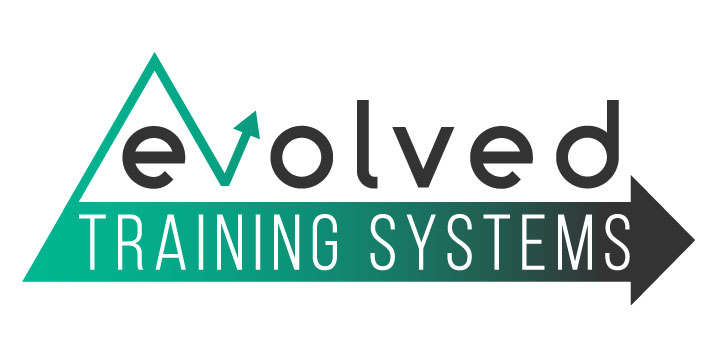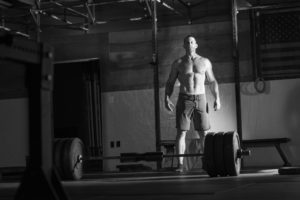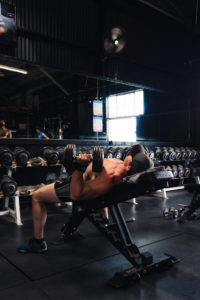OPEN WOD 18.2 and 18.2a
Interesting workout here. This first portion of the workout, “18.2,” is a SPRINT for the top athletes, and it’s actually more of a paced out workout for the average crossfitter. Your success on this workout will depend on your ability to know yourself.
The key is understanding how closely you can walk the “redline” of fatigue without teetering off the edge. If you just watched Noah Ohlsen and Patrick Vellner do the workout, you would not see the problem that will negatively impact the average crossfit athlete. The fact is, you still want to negative split this workout. I talked about the same thing last week in 18.1, but this is for real. You need to understand that the halfway point of this workout is basically finishing the round of 7 reps (56 of 110 reps complete). This means you have to still have energy and still be able to push hard for rounds 8, 9 and 10. Your pace depends fully on your ability to sustain that same pace for both “halves” of the workout.
I will discuss strategies and concerns relating to the max clean attempt below.
For Time – Reps 1-2-3-4-5-6-7-8-9-10 (12 min cap):
DB Front Squats (50/35 per hand)
Bar-Facing Burpees
***In any time remaining in 12-min period, establish 1-rep max clean
Nutrition:
The first part of this workout is extremely glycolytic. That means it will utilize almost entirely carbohydrates for energy. You will want to ensure your carb “bucket” is full, and this starts the night before the workout. Make sure to consume an additional 25-50g of starchy carbs at dinner the night before.
You will also want to consume some carbs (and protein) relatively shortly prior to the workout. Make sure to avoid fat as this will sit heavy in the gut and make it harder to digest the carbs that are needed for fast energy. Try to consume 1/4 of BW in carbs and 1/8 of BW in protein in liquid form 30 minutes prior.
Finally, you will want to drink a little bit more of the same mixture during the short recovery period prior to the clean attempts.
Initial Preparation Concerns:
DB Front Squats and Bar-Facing Burpees create quite a large level of fatigue on the legs and hips. Especially now, with the new burpee standard, athletes are required to jump up, versus stepping. Combined with the “below parallel” aspect of the front squat, mobilizing the hip region will be of prime importance.
Both movements require hip flexion and hip extension. You will want to spend some time with the “couch stretch” on the wall. I also suggest spending some time doing goblet squats with a kettlebell in the front rack, focusing on keeping an upright torso. Furthermore, complete a couple sets of just sitting in the bottom of the squat, with the KB in the goblet position. 30 seconds at a time for 2-3 sets should help significantly.
Then progress to placing the KB on the knee cap, aiding to flex the ankle forward and begin to create a better bottom position through ankle flexion. The ability to keep feet firmly planted, without shifting into the toes, will help delay fatigue
Also, spend time with basic glute-activation drills, such as banded monster walks, glute bridges, hip extensions etc… Just low reps and light loading so that you can begin to prepare the glutes for the work ahead without accumulating fatigue.
Specific Workout Prep:
1. 10-15 min Z1 warm-up – Z1 basically means to keep the intensity extremely low, and just get some blood flowing. This could 45-50 RPM on AirDyne, or a brisk walk etc… At no point should this be difficult, and you shouldn’t even break a sweat until the last few min.
2. Now we need to get the heart-rate elevated and get some lactic juices flowing. To accomplish this, we want to do 2-3 sets of 45 sec high-output level work, followed by 3-4 min of rest. The goal would be to choose a cycle of 3 movements for 15 seconds each with high turnover. Examples would be Russian KBS, Double-unders, no-push-up burpee box jumps etc…
3. Finally, we need some specific workout prep. The goal here is to understand how you will feel going from the squat to the burpee, and back to the squat. So complete the following, for 3 rounds:
4 DB Front Squat
4 Bar-facing burpees
4. Warm-up your clean to about 85-90% of your max for a single. This is important to prime the CNS for the work ahead. Then drop weight back down to about 60% of your max and set up to complete 18.2 (more details on this below)
The Movements:
The DB Front Squat is similar in nature to the DB lunges from 17.2 last year. The way you hold the DB’s will be a personal preference. For “speed,” it is faster to hold them in your hands with the heads of the DB resting on the shoulder. However, for the higher rep sets, it may make sense to put them on the traps where they can rest comfortably.
In the demo WOD from Ohlsen and Vellner, we saw two different styles of squatting. Ohlsen never took a rest at the top of the rep and just kept going up and down. Vellner was more composed and took a short breath at the top. I am a proponent of Vellner’s approach. This method allows him to focus on his breathing patterns while also saving something to be able to move more efficiently through the burpees. Furthermore, we saw Ohlsen struggle with the weight and fail to stand up with a 300# clean (this is a guy with a 360+ clean max). Vellner never failed the squat portion of his clean reps, so his approach allowed for fresher legs, without costing him much time in the first part.
The Burpee is going to create a lot of fatigue. Especially with the new standard. You must remember to keep breathing. Avoid going so fast that your breathing becomes panicked, especially in the first 75% of the workout. Make sure that you have enough left in the tank to push in the 10th round. Try to remain cognizant of this, and consciously breathe at the bottom and at the top of each rep.
The Clean for max weight must be achieved by the 12 minute mark. This allows for upwards of 7 minutes for the top athletes, and probably less than 4 minutes for the average crossfitter. You must also consider the necessary rest and recovery that will need to take place before you can pick up a heavy load.
The weight is going to feel extremely awkward and wobbly on your first attempt or two. For this reason, you should make an easy “confidence-building” lift at about 60% of your max. After that, you can get moving towards the more challenging weights.
Very important that you NOT rest on the ground. Use this time to put on your Oly shoes. If you sit too long, you will accumulate significant lactic acid and make it exponentially more difficult to get in the groove for your cleans. Take a moment on the ground, if needed, but then get up and walk around a little bit. Try to pick up for your first clean at the 45-60 sec mark after completing the first part. This is why the 60% starting weight is the right choice.
If you are low on time, you may need to make a bigger jump after this. Your decision of how much to increase will be a result of how difficult the first rep feels at 60%. If you have plenty of time, and know you can get 3-4 attempts, you can opt to make more reasonable jumps to build confidence (and recover more) before the challenging weights.
The leg fatigue from the Front Squats will impact your ability to create power in your pull. After all, most of the “pop” on the bar comes from the legs. So it is not necessarily accurate to think that you are better off doing a power clean because your legs are tired. If you are proficient at the squat clean, you need to squat clean these attempts.




